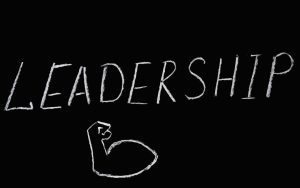Over the course of your life, you are bound to encounter many leaders, each with their own unique leadership style. While some may be inspiring and efficient, others put forth a lackluster effort and get mediocre results. If you’re curious about the best leadership practices to utilize in your own business, a key step is understanding your own strengths and those of your team.
The HIGH5 strengths assessment can provide invaluable insights into your natural talents and areas for growth, empowering you to lead more effectively. Whether you are a manager, CEO, or aspiring leader, developing leadership skills tailored to your strengths will become critical to your success and the success of those you lead. This article will cover a wide array of leadership styles and will help you find a suitable style.
What are leadership styles?
Leadership styles refer to leaders’ methods and approaches to guiding, managing, and influencing their teams and organizations. These styles vary widely and can include how leaders communicate, make decisions, and motivate others to achieve common goals.
The importance of leadership styles
Leadership styles are the techniques one can use to influence people. Anyone can be a leader. Yes, even those without a C-Level position can have a major influence on the other’s behaviors. However, holding a senior position forces an individual to work on their management skills. Don’t hold off on learning how to lead until later in your life.
Choosing your leadership style early on in your career has a multitude of benefits. Over half of employers surveyed by Indeed stated that the best indication of a candidate’s ability to succeed came from asking about leadership skills. This makes leadership qualities a top priority for most employers. Over time, your coworkers and senior staff will likely influence your idea of leadership. Their own style of leadership may become familiar to you, so you may be drawn to replicate it.
Ultimately, there is no one leadership style that you will use all the time. You will need to use each technique in appropriate situations. By familiarizing yourself with these leadership methods, you may discover one that is particularly appealing to you. Then, you can begin utilizing it in your workplace and ask for the feedback of others, or take a leadership skills test to grow your skills. Learning when to use each style is as important as developing a main leadership style, though. Be sure to incorporate some of the methods below for a more balanced approach to leading.
Understanding your leadership style can greatly enhance your effectiveness by aligning your management approach with your natural strengths. It enables you to lead more authentically and adapt your strategies to meet the needs of your team. Additionally, knowing your style helps in personal development, making it easier to identify improvement areas and capitalize on your inherent abilities.
10 leadership styles with pros & cons and examples
Coaching style
Coaches have a knack for identifying their team’s strengths and areas for development. They motivate the group as a whole but still devote time to individual improvement. A coach’s ability to pinpoint and leverage each team member’s unique talents is crucial to fostering growth and teamwork. The HIGH5 strengths assessment can be an invaluable tool for coaches, providing a comprehensive understanding of their team’s collective strengths and individual talents.
Armed with this knowledge, coaches can create a positive and motivating work environment that plays to their team’s strengths, while also addressing developmental areas. They can stress the importance of communication and trust between team members, empowering each individual to contribute their best.
The main drawback to using this style is that it is very time-consuming, as it involves learning about every individual’s skills. You must be heavily involved in your team’s work to use this style.
Traits of a Coach:
- Challenging the team to help everyone grow
- Extremely helpful, but also wish for the team to be independent
- Value learning
- Open-minded to suggestions
- Great listeners
Benefits: Coaches create a positive and open-minded work environment. They encourage the independence of a team and instill confidence into their team members by focusing on their strengths. Many employees will develop long-lasting relationships with coaches.
Drawbacks: This style may not be suitable for a fast-paced work environment, for it is time-consuming. Coaches are also more prone to burnout.
Pro Tip From HIGH5
As a coach, leverage the HIGH5 strengths assessment to gain a deeper understanding of your team’s collective and individual talents. Use this knowledge to assign roles and responsibilities that align with their natural strengths, fostering engagement and productivity. Celebrate successes that showcase their strengths in action, and provide growth opportunities that build on their areas for development.
Visionary style
Visionaries are result-oriented and innovative leaders. They earn the trust of their team by consistently inspiring them and developing new ideas. Visionaries also stress the importance of organization and believe that confidence is necessary for their colleague’s success. Usually, visionaries are associated with startups or smaller yet innovative startups. They are also found in larger companies that are experiencing an ownership change.
Traits of a Visionary:
- Not afraid to take risks
- Innovative
- Optimistic
- Strategic planning for growth
- Determined
- Inspire others
Benefits: Since they are growth-focused, visionaries are great startup leaders. They unite teams behind a shared purpose and bring new ideas into the workplace.
Drawbacks: Visionaries struggle to see people on an individual level. They may miss certain details because they focus on the big picture. Sometimes, team members may feel powerless because the visionary focuses mostly on the future, and does not wish to dwell in the present or past.
Servant style
Servant leaders see their employees as people first and employees second. As a result, they wish for their team members to feel fulfilled and find meaning in their work. By emphasizing the importance of satisfaction and individual growth, servant leaders create an environment where employees feel valued and respected.
The HIGH5 strengths assessment can be a powerful tool for servant leaders, as it provides insights into each team member’s unique talents and motivations. Armed with this knowledge, servant leaders can create opportunities for individuals to leverage their strengths, fostering a sense of purpose and fulfillment in their roles.
Servant leaders are most commonly found in nonprofits. They ensure people are engaged in their work and keep everyone motivated to make a difference in the world.
Traits of a Servant:
- Have a people-first mindset
- Encourage collaboration over competition
- Care deeply about their cause
- Are great communicators
- Value constructive feedback
Benefits: Through focusing on collaboration and ensuring every team member is passionate, Servants dramatically increase productivity and work satisfaction. They reduce turnover as well, as many employees stay loyal to them.
Drawbacks: Servants are selfless and are prone to overwhelming themselves with tasks.
Being authoritative or strict does not come naturally to these leaders either, so it is difficult for them to demand work. They may become too focused on the team and forget about long-term goals.
Pro Tip From HIGH5
As a servant leader, use the HIGH5 strengths assessment to gain a deeper understanding of what motivates and energizes each team member. Tailor their roles and responsibilities to align with their natural talents, and provide opportunities for them to contribute in ways that showcase their strengths. By empowering individuals to work in their areas of strength, you’ll foster a more engaged and fulfilled team.
Autocratic style
These leaders are very efficient and authoritative, stopping at almost nothing to reach their goals. They trust few individuals and often make decisions alone. Employees are expected to perform their duties with perfection. Autocratic leaders are often found in industries with strict regulations, such as medicine or artificial intelligence.
Individuals may feel confined or limited if they work under an autocratic employer. However, this additional supervision can be beneficial for inexperienced workers.
Traits of an autocratic leader:
- Goal oriented
- Self-confident
- Motivated by results
- Delegate tasks efficiently
- Set clear expectations
- Dependable
- Supervise employees
- Value structure, control, and consistency

Benefits: Autocrats ensure the rules are understood and are followed. They make decisions by themselves, thus saving employees time. Workers also tend to be more productive under authoritative bosses.
Drawbacks: Some employees may become disinterested in their work, as their input is not valued by autocratic leaders. They may not be a welcoming environment, and some leaders may become overwhelmed with the control they possess as autocrats.
Laissez-Faire or hands-off style
Hands-off leaders provide little supervision to their team and simply focus on achieving a certain result by a due date. In essence, they are the opposite of the autocratic leader. Many employees feel free under laissez-faire leaders, for they are not being micromanaged.
However, this style is usually only used under specific circumstances. It may be appropriate if your team is already experienced and thus does not require additional training. Since communication is not stressed by these leaders, many employees can become confused about goals or deadlines. Some are forced to find motivation from outside sources as well.
Traits of a Laissez-Faire Leader:
- Value freedom
- Promote independence
- Ensure the team is equipped with sufficient tools
- Help others lead
- Offer feedback
- Create a relaxed atmosphere
Benefits: Many employees enjoy the added freedom and emphasis on self-sufficiency. They are allowed to express their creativity and are less likely to be stressed.
Challenges: This style is not appropriate for most junior staff or anyone who needs training before becoming more independent. Employees may report confusion from the lack of communication and may not feel supported.
Democratic style
The democratic style balances aspects of the Laissez-Faire and autocratic techniques. Democratic leaders seek input from their team before they make a decision. This makes team members feel like they matter within the company, which leads to workplace satisfaction and increases in productivity.
However, Democrats also feel the need to be involved in their company. So supervision is not negatively viewed by these leaders. Often, Democrats are found working in the techno, toy industry, for it emphasizes innovation, feedback, and open-mindedness.
Traits of a Democratic Leader:
- Interfere when necessary
- Flexible with schedule
- Value input and discussion
- Promote creativity
- Create an open-minded workforce
- Share information with their team
Benefits: Employees feel more satisfied and empowered when their voices are heard and valued. This leadership style can be applied in a variety of situations, as it allows for employee freedom while still letting the manager make the final decisions.
Drawbacks: Obtaining and evaluating everyone’s can be a lengthy process. Combine that with the discussion, debate, and organization needed to use this style, and you can see why it may become inefficient. Plus, some individuals may be more comfortable with minimal involvement in the decision making process.
Pacesetter style
Pacesetters enjoy working in fast-paced environments and love obtaining results as quickly as possible. They value performance and efficiency. Often, Pacesetters create challenges for their team to grow and keep up with their demands.
For many, working with a pacesetter int leader can help increase their productivity, improve their work ethic, and help them get motivated. Others, though, require mentorship and feel distressed in such an environment.
Traits of a Pacesetter:
- Set goals and achieve them
- Enjoy competition
- Value performance and efficiency
- Create challenges for teams
- Establish a fast-paced work environment
- Are high energy and extroverted

Benefits: Pacesetters are certain to push employees to their limits, resulting in accomplishing a multitude of goals quickly. They force others to adapt to a dynamic environment and make decisions quickly.
Drawbacks: Most employees will not be used to such high standards and constant work, which leads to burnout and stress. Working too quickly can result in poorly thought-out decisions being made, especially for new staff members.
Transformational style
Like coaches, transformational leaders believe that open communication and thoughtful goal-setting are keys to unlocking a team’s potential. However, transformational leaders tend to focus more on collective objectives than individual goals. These leaders avoid micromanaging, instead empowering their team to work independently toward a shared vision.
The HIGH5 strengths assessment can be a valuable tool for transformational leaders, providing insights into the collective strengths of their team. By understanding and leveraging these strengths, transformational leaders can more effectively inspire their team to achieve ambitious goals while playing to their natural talents.
Traits of a Transformer:
- Respect their employees, but demand respect back
- Encourage free thinking
- Inspire others
- Do not stress details and focus on the big picture
- Allow others to be independent
- Skilled at organizing
Benefits: Transformational leaders trust their employees and encourage them to work hard. They see the company’s ethics as a reflection of themselves. Both of these traits lead to a boost in employee morale and decreased turnover.
Drawbacks: Details are often overlooked by these leaders. They may forget to be authoritative when necessary.
Pro Tip From HIGH5
As a transformational leader, use the HIGH5 strengths assessment to identify your team’s collective strengths. Craft a compelling vision that aligns with and capitalizes on these strengths, inspiring your team to work toward ambitious shared objectives. Assign roles and responsibilities that allow individuals to contribute in areas where they naturally excel, fostering a sense of ownership and commitment to the collective goal.
Transactional style
Individuals with this leadership style focus on productivity, performance, and quality of output. They create incentives to encourage employees to work harder. Often, these incentives come in the form of money.
Transactional leaders are not afraid of punishing poorly performing workers. However, they do offer mentorship to those who may benefit from it. This style is often utilized when obtaining a certain amount of customers, revenue, or profit is necessary. However, it is not commonly used long-term or in more creatively oriented industries.
Traits of a Transactional Leader:
- Enjoy competition
- Micromanage
- React quickly
- Set goals and follow through
- Push others to their limits
- Enjoy structured environments
- Value authority
Benefits: This leadership style is best used in the short term to achieve clearly defined goals. It can lead to some employees rising to the challenge and improving their work ethic.
Drawbacks: Some employees will feel disconnected from the company mission, for their manager focuses mostly on competition. This is not a strategy that should be utilized long term for most businesses, for its effectiveness is decreased over time.
Team members may not be motivated by salary boosts alone, as many people will not feel fulfilled under such leadership.
Bureaucratic style
Bureaucratic leaders create structured environments and ensure that team members follow the rules they create. Often, these leaders create hierarchies to clearly define every individual’s role in the company.
Collaboration is seen as unnecessary by Bureaucrats. Thus, their team members learn to become independent. This leadership style is ideal for industries like healthcare or government, where clear hierarchies can be beneficial.
Traits of a Bureaucratic Leader:
- Value discipline
- Create competition
- Committed to accomplishing goals
- Strong work ethic
- Detail focused
- Create hierarchies and establish a structure
- Delegate tasks effectively
Benefits: The team members benefit from clear communication from their boss. They follow strict rules and are quite efficient under the Bureaucratic leader. Such leaders also ensure employees are disciplined and understand to focus solely on accomplishing goals. This can be an effective leadership strategy in highly regulated industries.
Drawbacks: An employee’s creativity may be stifled and some will feel restricted by the strict structure. The hierarchies limit some individuals and prevent them from feeling motivated. Avoid using this leadership style in dynamic environments, for Bureaucrats rarely change their mind.
How do you identify your leadership style?
Identifying your leadership style involves taking a leadership style test, self-reflection and feedback. Start by taking the HIGH5 strengths assessment to uncover your talents and preferences in leading others. Consider how you naturally interact with your team and what motivates your decision-making processes. Additionally, seeking feedback from peers and mentors can provide external perspectives on your leadership approach and effectiveness.
How do you choose the right leadership style for you?
Choosing the right leadership style involves understanding your personality, strengths, and the specific needs of your team and organization. Utilize tools like the HIGH5 leadership assessment to gain insights into your natural talents, which can guide your choices.
Consider the dynamics of your team and the challenges you face to select a style that effectively responds to these factors. Adapting your approach based on feedback and outcomes is crucial for ongoing leadership development.
How to develop your leadership type?
Know yourself
Knowing yourself is key to developing an effective leadership style. Take time to explore how you interact with colleagues and understand what influences your approach to leading and communicating. Seek feedback from trusted friends, family members, or mentors about your perceived leadership strengths and areas for growth.
Additionally, consider taking the HIGH5 strengths assessment to gain a deeper understanding of your natural talents and tendencies. This self-awareness can guide you in choosing and refining a leadership style that aligns with your authentic strengths, enabling you to lead with confidence and impact.
Understand different leadership styles
Study the way many modern leaders guide their teams. Compare and contrast their strategy to the method you currently use.
Practice using multiple techniques
You may become used to using only one leadership technique, but this is not ideal. Experiment by using multiple techniques. If you believe you have poor leadership skills, you may have just not found the best leadership style for your personality. Be sure to remain authentic and learn from any leadership mistakes you make, no matter what style you use.
Become an Agile Leader
Since workplaces are constantly evolving, you cannot keep your leadership style constant to all circumstances. It is necessary to combine modern approaches with traditional ones to adapt your leadership.
Every day, you will be faced with new challenges. Thus, you will need to speak with your team to determine the most effective style to predominantly use. Agile leadership is necessary for leading the teams of the 21st century.
Pro Tip From HIGH5
After taking the HIGH5 strengths assessment, reflect on how your unique strengths could be better leveraged in your leadership approach. For example, if you excel at strategic thinking, focus on crafting a compelling vision that inspires your team. If relationship-building is a strength, prioritize open communication and fostering trust with your team members. Continually seek feedback on how to lead in a way that plays to your natural talents.
How hard is it to change your leadership style?
Now that you are familiar with the benefits and drawbacks of each leadership style, you may be interested in incorporating new styles into your leadership. Luckily, it is fairly simple to change your leadership style, but it requires making consistent changes.
You need to identify inefficiencies in your current practices and swap them out for the style you would like to replicate. To find your ideal style, try recreating techniques used by leaders who inspire you. It will help you find traits that you can implement. Do not worry about being imperfect at first.
Finding a suitable style takes time. So be sure to learn from your mistakes and quickly eliminate any inefficiencies that arise while you try to find your ideal leadership techniques.
Leadership styles FAQ
What are the 8 common leadership styles?
The eight common leadership styles are Autocratic, Democratic, Laissez-Faire, Transformational, Transactional, Servant, Pacesetter, and Bureaucratic.
When should I use different leadership styles?
This depends heavily on the specific circumstance. If someone is struggling with motivation, competition may be a great way to boost their morale, and so can an incentive. Therefore, you need to learn about the different styles and speak with your team to determine when to use each style. You should ideally focus on your team’s strengths and utilize strength based leadership skills.
What are the 4 basic leadership styles?
The four basic leadership styles are Autocratic, Democratic, Laissez-Faire, and Transformational.






